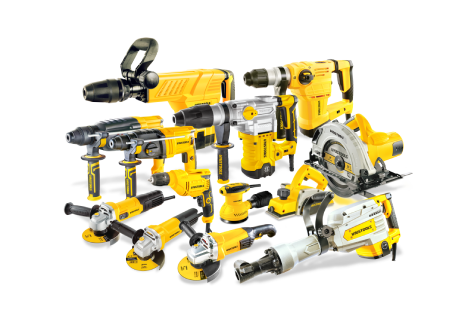Navigation
Impact wrenches are powerful tools that quickly work even the toughest bolts and nuts. However, they can also be dangerous if not used correctly.
In this article, we’ll review the dos and don’ts of using an impact wrench safely.
DOS:
1. Read the Manual
Before using an impact wrench, it’s essential to read the user manual thoroughly. The manual will provide instructions on how to use the tool correctly, including how to hold the wrench, adjust the torque settings, and attach and detach sockets.
2.Wear Protective Gear
Wearing protective gear is critical when using an impact wrench. The high torque and vibration generated by the tool can cause debris and metal shavings to fly around, posing a risk of eye injury. Therefore, wear safety glasses or a face shield to protect your eyes.
In addition, the impact wrench can be loud, so it’s also essential to wear hearing protection to prevent damage to your hearing.
3.Keep the Work Area Clean and Clear
It’s crucial to keep the work area clean and clear when using an impact wrench. Remove any obstacles or debris that may cause you to trip or fall, and ensure the workspace is well-lit.
4.Maintain the Impact Wrench
Proper maintenance is essential to keep the impact wrench in good condition and prevent accidents. Regularly clean and lubricate the tool according to the user manual’s instructions. Check the air filter and replace it if it’s dirty.
5.Use the Correct Socket and Attachments
Always use the correct socket size and attachments for the task at hand. Using the wrong socket can cause damage to the fastener or the tool itself, and may lead to injury. Ensure that the sockets and attachments are compatible with your impact wrench model.
6.Support the Tool with Both Hands
When using an impact wrench, it’s important to support the tool with both hands for better control and stability. This will help you apply even pressure and prevent the wrench from slipping off the fastener, reducing the risk of accidents and injuries.
7.Adjust the Torque Settings Appropriately
Impact wrenches come with adjustable torque settingsl, allowing you to customize the force exerted on the fastener. Be sure to set the appropriate torque for the task to avoid over-tightening or under-tightening, which can cause damage to the fastener or the surrounding material.
8.Use the Tool at the Right Angle
Always position the impact wrench at a right angle to the fastener for optimal performance and safety. This will ensure that the force is applied directly onto the fastener, minimizing the risk of slipping or stripping the fastener.
9.Store the Impact Wrench Properly
After use, store your impact wrench in a clean, dry place, away from moisture and extreme temperatures. Proper storage will help extend the lifespan of the tool and reduce the risk of accidents caused by a malfunctioning impact wrench.
DON’TS:
1.Use the Wrong Socket
Using the wrong socket can damage both the wrench and the socket. Before using the impact wrench, ensure you have the right socket size and type for the job. Use only impact-rated sockets to withstand the high torque and vibration the tool generates.
2.Use the Wrong Torque Setting
Using the wrong torque setting can cause damage to the fastener or the material you are working on. Therefore, make sure to adjust the torque setting correctly for the job. The user manual will provide information on the correct torque setting for different applications.
3.Over-Tighten or Under-Tighten Fasteners
Over-tightening or under-tightening fasteners can cause damage to the material or equipment you are working on. Therefore, use the correct torque setting and stop tightening once you reach the recommended torque.
4.Use the Impact Wrench as a Hammer
Using the impact wrench as a hammer can damage the tool and cause injury. The impact wrench is designed to tighten or loosen fasteners, not to hammer or chisel. Therefore, use the right tool for the job.
5.Ignore Safety Gear
Neglecting to wear appropriate safety gear while using an impact wrench can lead to injuries. Always wear safety goggles to protect your eyes from flying debris, gloves to improve grip and protect your hands, and ear protection to minimize the risk of hearing damage from the loud noise the tool produces.
6.Operate the Wrench with Wet or Greasy Hands
Operating an impact wrench with wet or greasy hands can lead to accidents, as the tool may slip out of your grip. Make sure your hands are clean and dry before using the wrench, and use gloves to maintain a secure grip on the tool.
7.Disassemble the Tool Without Proper Knowledge
Attempting to disassemble or repair an impact wrench without proper knowledge or expertise can cause damage to the tool and pose a safety risk. If your impact wrench requires maintenance or repair, consult the user manual or seek assistance from a professional technician.
8.Ignore Regular Maintenance
Neglecting regular maintenance can shorten the lifespan of your impact wrench and lead to poor performance. Make sure to clean, lubricate, and inspect your tool regularly to ensure optimal performance and longevity.
9.Use a Damaged or Worn-Out Socket
Using a damaged or worn-out socket can lead to slippage, damage to the fastener or material, and potential accidents. Inspect your sockets for signs of wear or damage and replace them as needed to ensure safe and effective use of your impact wrench.
Conclusion
In conclusion, an perfect impact wrench can be a powerful and useful tool when used correctly. However, it’s essential to follow the dos and don’ts mentioned above to ensure the safe and effective use of the tool. Remember to read the user manual, wear protective gear, use the correct torque setting and socket, keep the work area clean and clear, maintain the tool, and use the right tool for the job.



